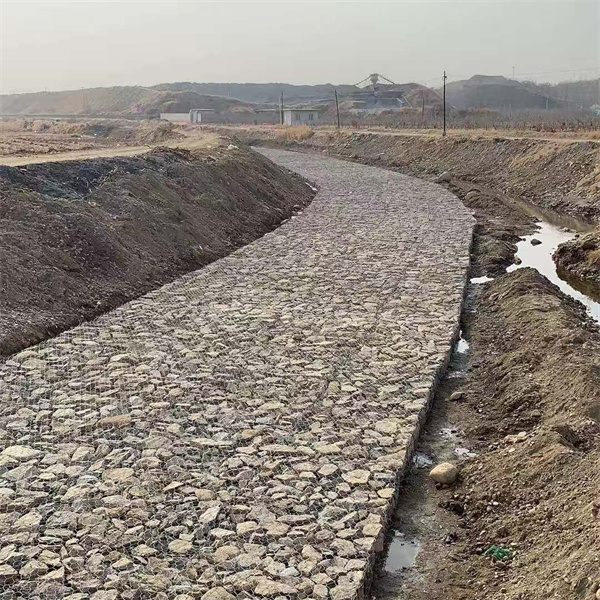Дек . 03, 2024 14:40 Back to list
gabion bridge abutments
Gabion Bridge Abutments A Sustainable Solution for Modern Infrastructure
In recent years, the construction industry has increasingly turned to sustainable and environmentally friendly practices. Among the notable innovations is the use of gabion structures, particularly gabion bridge abutments, which have become a popular choice for engineers and architects alike. Gabions, consisting of wire mesh cages filled with stones or other materials, offer multiple benefits that contribute to both the structural integrity and ecological harmony of infrastructure projects.
What Are Gabion Bridge Abutments?
Gabion bridge abutments are foundational supports for bridges made from gabion cages. These cages are typically filled with local, quarried stone, boulders, or other durable materials, allowing for adaptability depending on the site conditions. The gabion design is inherently flexible and can be engineered to accommodate a range of loads and environmental factors. This construction method not only supports the bridge deck but also helps stabilize the surrounding soil, minimizing erosion and providing effective drainage.
Advantages of Gabion Bridge Abutments
1. Environmental Compatibility One of the standout features of gabion structures is their ability to blend harmoniously with the environment. Without the need for extensive excavation, gabion abutments can minimize land disturbance. Moreover, they can enhance local ecosystems by encouraging vegetation growth between the gaps in the stones, creating habitats for various wildlife species.
2. Cost-Effectiveness Gabion bridge abutments can be more economical compared to traditional concrete structures. The materials used can often be sourced locally, reducing transportation costs. Additionally, the installation process is generally quicker and requires fewer specialized labor skills. This efficiency can lead to significant savings in both time and resources during the construction phase.
gabion bridge abutments

3. Erosion Control Erosion is a major concern for any bridge; however, gabion abutments contribute positively to erosion control. The stones not only provide weight that stabilizes the abutment but also facilitate water drainage, thereby reducing the risk of washouts during heavy rain or flooding. This capacity is particularly beneficial in areas prone to extreme weather, where less robust structures might fail.
4. Durability and Maintenance Gabion structures are renowned for their long-lasting nature. The natural stones used in the gabions are resistant to weathering and can withstand heavy loads. Additionally, they require minimal maintenance. Should any stones become dislodged over time, repairs can be easily executed by replacing individual stones rather than needing extensive reconstruction.
5. Aesthetic Appeal Unlike conventional concrete, gabion abutments can add a natural beauty to a bridge’s design. The visual appeal of the stones, particularly if colorful or uniquely shaped, can enhance the overall aesthetic of the structure. Many engineers and architects appreciate this versatility in design, integrating gabion abutments into landscapes without compromising on architectural integrity.
Applications and Case Studies
Gabion bridge abutments have been successfully implemented in various infrastructure projects around the globe. For instance, in rural and semi-urban areas, where access to raw materials may be limited, gabions have served as an ideal substitute for traditional abutment designs. Case studies from regions such as Europe and North America showcase how gabion abutments have not only supported bridges but have also promoted ecological restoration in construction zones, allowing flora and fauna to thrive alongside infrastructure.
Conclusion
Gabion bridge abutments represent a forward-thinking approach to modern engineering challenges, highlighting the importance of sustainability in construction practices. Their environmental benefits, cost-effectiveness, durability, and aesthetic charm position them as an attractive alternative to traditional methods. As the industry continues to seek innovative solutions to address infrastructural and environmental needs, gabion structures will likely play an increasingly pivotal role in the design and construction of resilient bridges that honor the balance between functionality and nature. With advancements in materials science and engineering techniques, the future of gabion bridge abutments looks promising, paving the way for smarter and more sustainable infrastructure solutions.
-
HESCO Gabion Baskets for Coastal Erosion Prevention
NewsAug.22,2025
-
Longevity and Durability of River Rock Gabion Walls
NewsAug.22,2025
-
How to Integrate Gabion 3D Walls in Urban Planning
NewsAug.22,2025
-
Reno Mattress Gabion Applications in Civil Engineering
NewsAug.22,2025
-
How to Install Wire Mesh for Gabion Baskets Properly
NewsAug.22,2025
-
Best Materials for Filling a Chain Link Gabion
NewsAug.22,2025
-
Wire Mesh Thickness Impact on Gabion Wall Load Bearing
NewsAug.12,2025






